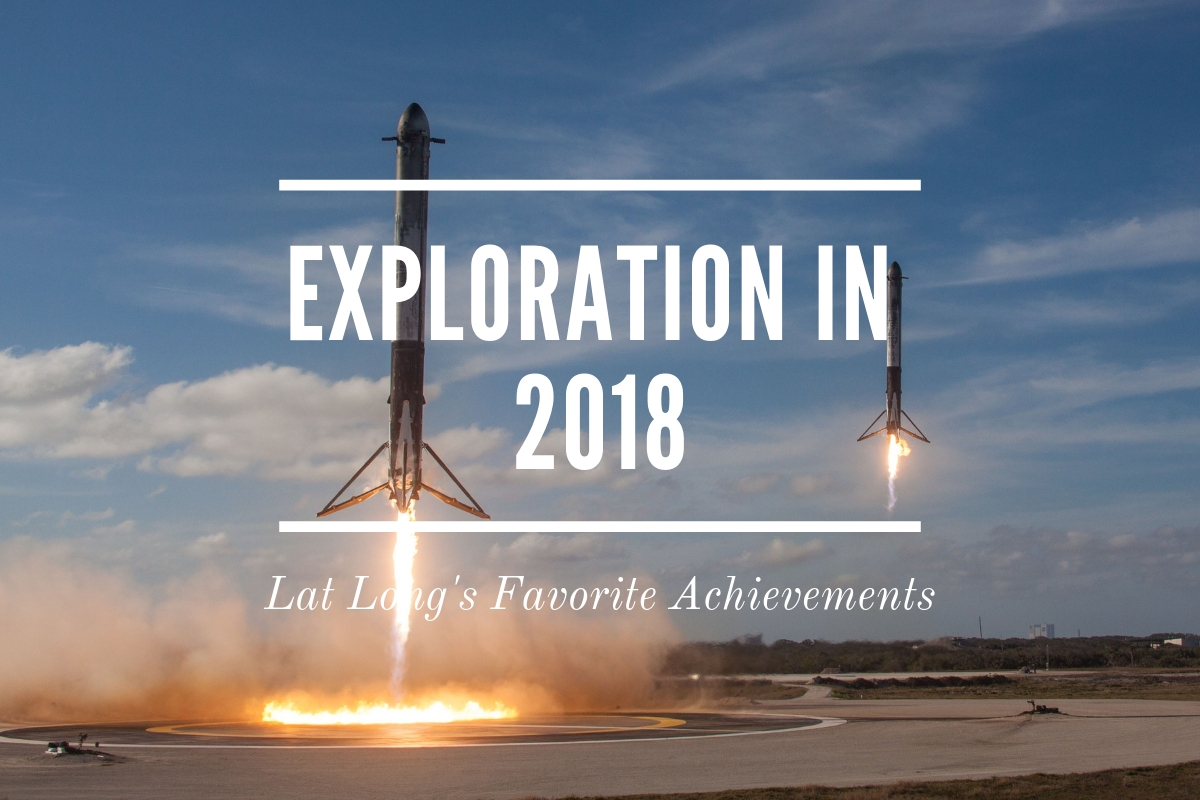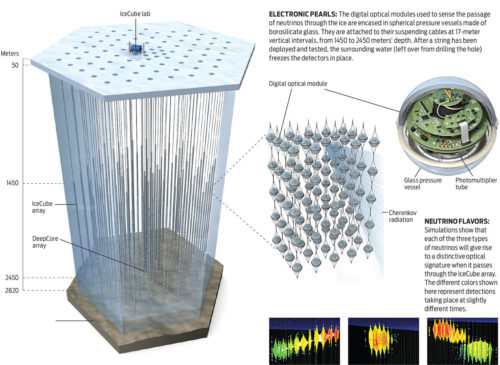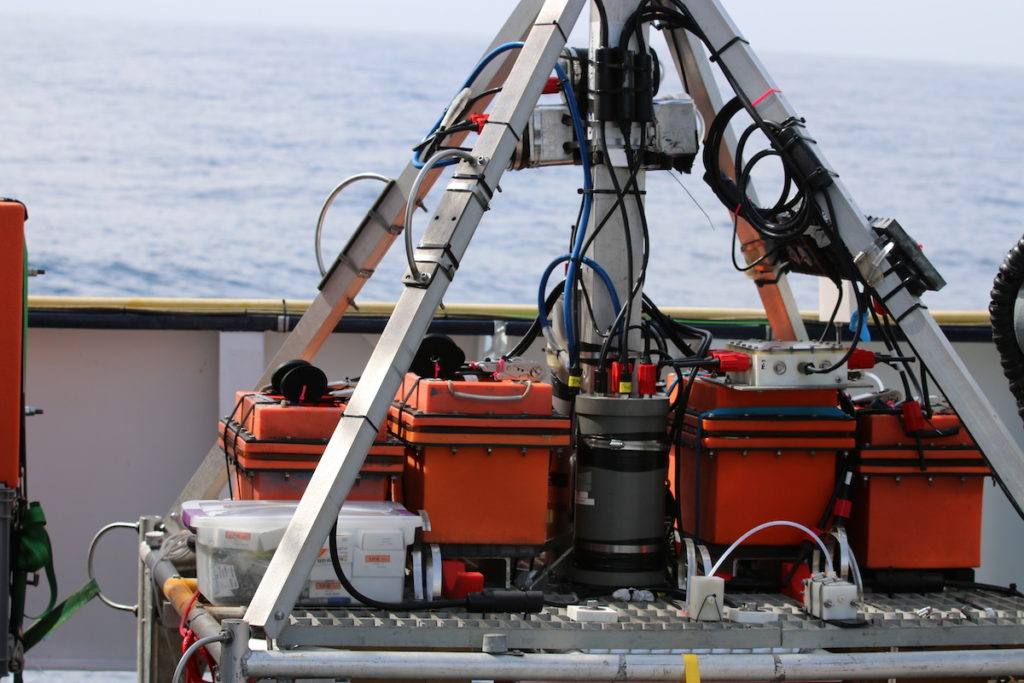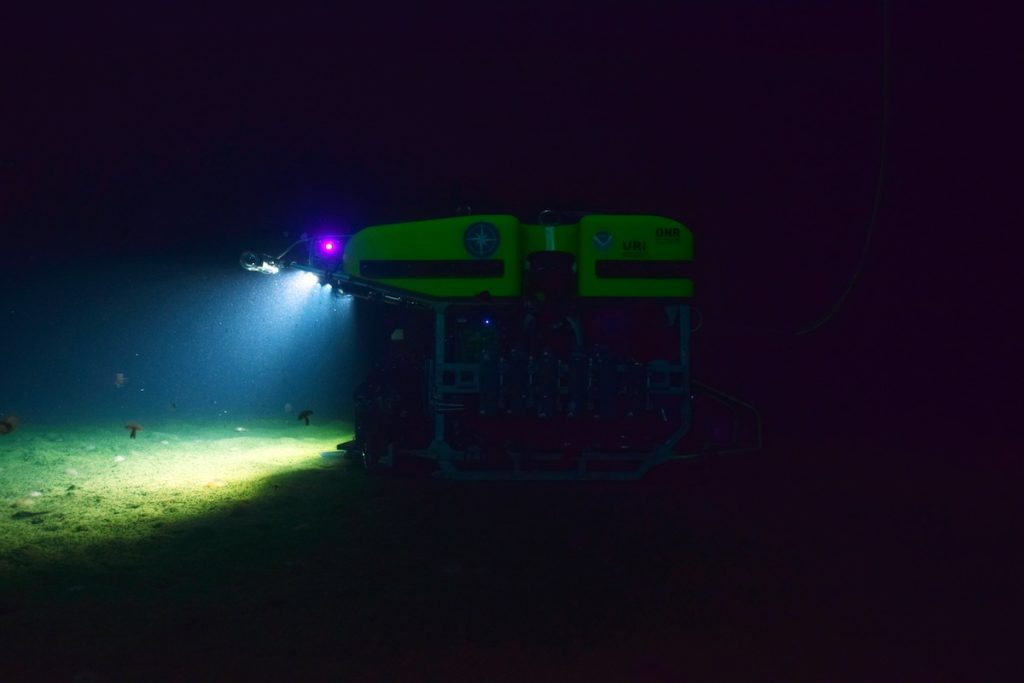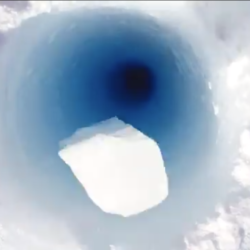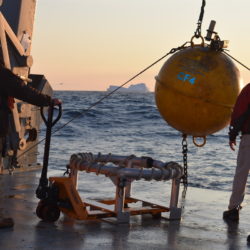Our Favorite 2018 Achievements In Exploration
When we speak of exploration in the modern era, many people are surprised to learn how much is left unknown on our own planet, much less in the cosmos beyond. While we see hyper-realistic renderings of deep space entities and 3D maps of the ocean floor with some regularity, our sense of omniscience is a tenuous one. The reality is that we’re constantly discovering new things, both near and far away. In 2018, scientists and explorers made huge strides to expand our understanding of the world and create the technology and science that will drive discoveries for years to come. As we hurdle into the new year, we’ve assembled our favorite exploration milestones from 2018, from light years away to the deepest parts of the sea.
SpaceX Double Booster Landing
The last time so many people watched an aerospace event together was the Felix Baumgartner jump in 2012. Then, in February 2018, we all collectively held our breath and were treated to one of the most unexpectedly beautiful sights of the year as twin boosters from the SpaceX Falcon Heavy touched down simultaneously.
With 21 launches (18 of them commercial) last year, SpaceX confirmed its position as the leader in orbital payload delivery. Its competitors are also seeing successful growth, but the ability of SpaceX to land and reuse its rockets is a game changing innovation, and one they continue to push to new areas of opportunity with the development of ever-larger platforms like the Falcon Heavy. With this successful test of a dual landing, they underscored the commercial viability of their efforts while capturing the imagination of a global audience.
IceCube’s Blazar Neutrino Discovery
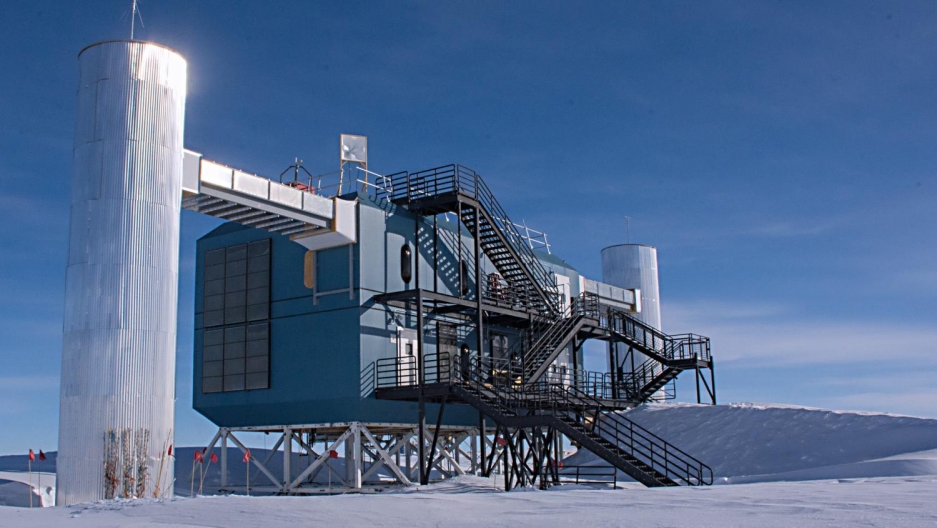
Neutrinos are unfathomably small subatomic particles that zip around the universe, rarely interacting with common matter – “trillions of neutrinos from the sun stream through your body every second without so much as wobbling an electron”. Extraordinarily sensitive equipment is required to even detect, much less observe a neutrino, so researchers build huge installations such as the IceCube facility in Antarctica which has an array of 86 strings, each containing 60 detection modules sunk up to 2,450m (>1.5miles) into the polar ice with a hot water drill.
IceCube announced in 2013 that they had detected 28 neutrinos that had likely originated outside of the Solar System, but the blockbuster discovery a few years later would go many steps further. In September 2017 (findings were released in July 2018), neutrino 170922A was detected and the IceCube system alerted astronomers in the southern hemisphere to monitor for abnormal celestial events. This coordination lead to the discovery of a deep space blazar – an incredibly bright beam formed when a large object falling into a black hole has some of its material is ejected into space at nearly the speed of light.
IceCube researchers and their astronomer counterparts determined that this blazar, 3.7 billion light years away, was the source of the neutrino they detected, marking the first time we’ve located a deep space object by detecting its neutrinos.
New Definition Of The Kilogram
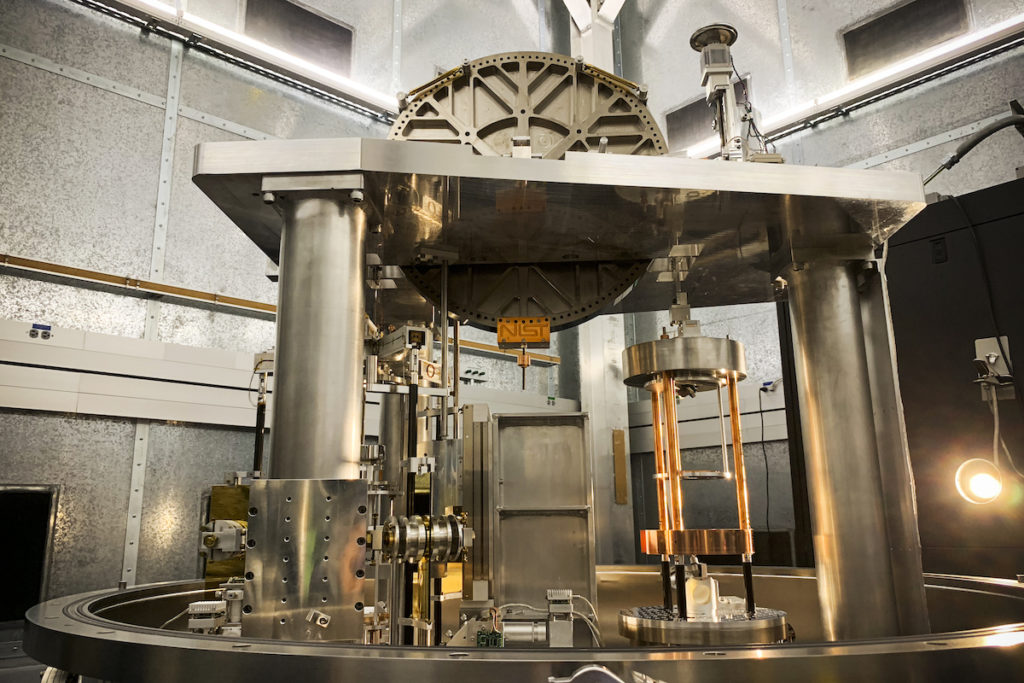
Since 1889, the official standard for a kilogram was a carefully stored piece of platinum tucked away in a French vault. The process for maintaining the physical specimens is fascinating as this episode of Radiolab explains, but a little unwieldy. By last year, every other international standard of measurement had been redefined in terms of an atomic standard known to be universally true. In November 2018, the Kilogram finally joined their ranks with a new standard definition that uses the Planck constant to define the kilogram in terms of the meter and the second, so that its true weight can be determined by electrical current in a Kibble balance. It’s mind bending stuff that feels a lot less clear to those of us lacking in post-grad physics credentials, but the important thing is this: while before, you could only know the exact weight of a kilogram by weighing a physical item, now any lab, anywhere in the universe, could reproduce our standard unit of weight from written instructions.
Mars InSight Rover Landing
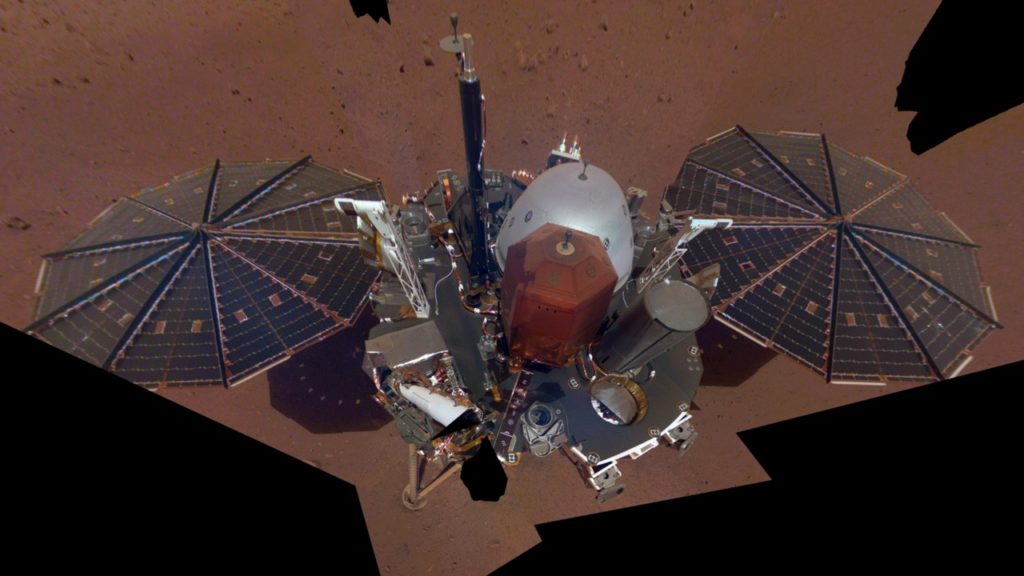
NASA is on a winning streak when it comes to Mars exploration; a 20 year achievement recently capped by the touchdown of the InSight Lander. InSight touched down November 26, 2018 and is expected to be operational for two years (one Martian year) studying surface and subterranean conditions of the planet. The lander has already deployed a seismometer which will send back the first seismic measurement of another planet, it will deploy the first deep-soil probe on Mars and has already sent us the first sound recording of Martian winds. InSight is a major leap forward in Martian exploration and you can simulate its deployment procedures with this awesome 3D interaction!
Colin O’Brady’s Trek Across Antarctica
One of my favorite articles of 2018 was The White Darkness, an engrossing account of Henry Worsley’s 2016 ill-fated attempt to cross Antarctica on foot without aid. It renewed our own interest in polar exploration and lead us to watch with rapt attention as Colin O’Brady forged 932 miles across the icy continent this year, becoming the first person to complete the trek without resupply.
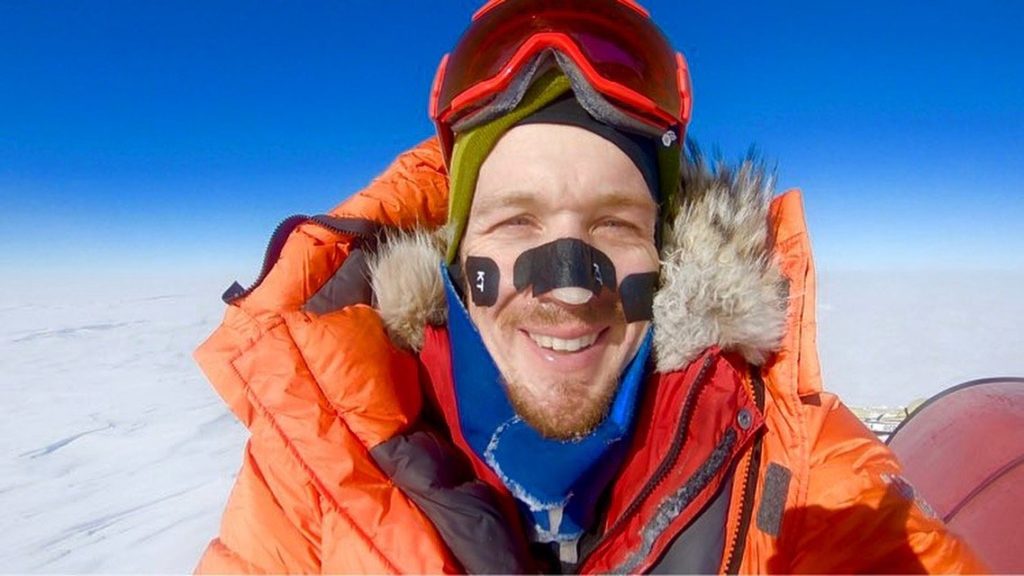
He had the benefit of traversing part of the route on the McMurdo-Pole “highway” of marginally less terrible terrain which doesn’t detract from his feat of endurance in the slightest, while reserving some future glory for explorers to come.
First Greenhouse Vegetables Harvested In Antarctica
Antarctica’s first dedicated greenhouse, dubbed EDEN-ISS, was setup in early 2018 and its crew harvested their first vegetables by April. By this past autumn, they had successfully harvested over 77 kg (170lbs) of fresh lettuce, 51 kg (112 lbs) of cucumbers, 29 kg (64 lbs) of tomatoes, 12 kg (26 lbs) of kohlrabi, 5kg (11 lbs) of radishes and 9 kg (20lbs) of herbs from just 13 square meters (140 sq ft).
The soil-less greenhouse is a testing ground for pollinating and growing edible vegetables in extreme conditions, a necessary capability for any future milestones in long-term human exploration. Astronauts aboard the space station have grown small quantities of vegetables in the past but the Antarctic facility allows for substantially large production and offers a testing area for future methods and technology to be used in orbit and beyond. But more immediately, the effect has made a huge impact on winter crews at the Antarctic station who are frequently on base for months between supply plane visits and see the infusion of fresh vegetables to be a welcome relief from pre-prepared long-term provisions.
You can follow the crops’ progress daily as photo updates are posted of each planting zone. At the moment, we’re awaiting a fresh planting, but the most interesting feature is going back in time to a previous date, then clicking “autoplay” and watching how much the plants throve from one day to the next.
Triton 36000/2 and Hadal Exploration System
Ocean exploration is enjoying a renewed sense of importance lately, driven by public interest in conservation and a growing realization that as we look toward the stars, we actually know very little of the deepest corners of our own planet. Only three people have visited the deepest point of the ocean, a landmark feat that leaves much unknown. Visiting those depths is akin to exploring a pitch black football stadium with a single small match to light the way. And until 2018, the technology was not even in place to make a repeat visit, so Victor Vescovo and Triton Submarine created the Triton 36000/2; a deep-sea submersible capable of taking a 2 person crew to depths of 11,000m (36,000 ft) in about two and a half hours.
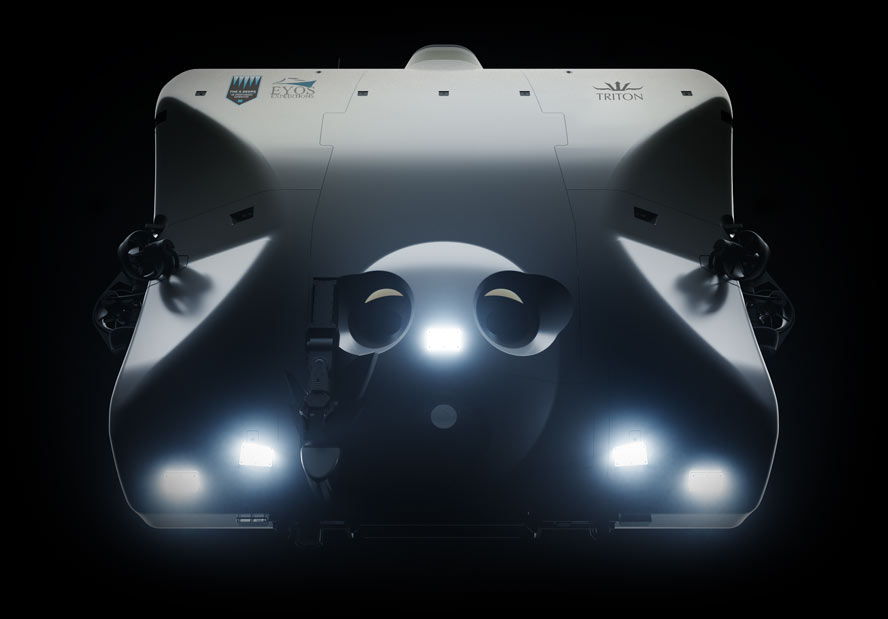
This submersible is a milestone in the history of deep-sea exploration and is outfitted with all the equipment necessary to capture high quality media on its 16 hour dives to the darkest depths. Having completed significant testing, its coming out party is an achievement in its own right – a series of expeditions to visit the deepest point in each of the five oceans: the Puerto Rico Trench in the Atlantic, South Sandwich Trench in the Southern Ocean, Java Trench in the Indian Ocean, Challenger Deep in the Pacific and Molloy Deep in the Arctic. The aptly named Five Deeps Expedition has already descended to the deepest point of the Atlantic and will cover the globe over 11 months and include the first manned descents to many of its destinations. Once the expedition has concluded, you’ll be able to purchase this extraordinary technology for a cool $48 million, which might be a great deal when you consider that it will have attained several unbeatable world records and exploration milestones at that point.
Ocean Discoveries: Volcanoes and Reefs
Within the Tasman Sea lies a chain of extinct volcanos whose peaks rise up to 3km (1.9 miles) above the sea floor, but don’t even come close to the surface. In waters 5,000m (16,400 ft) deep, these colossal mountains lie off the eastern coast of Australia and are believed to have formed 30 million years ago as Australia and Antarctica separated. The research team credited with their discovery was examining phytoplankton behavior when their underwater imaging systems detected some very unexpected contours.
A few months prior, another team discovered a previously unknown coral reef stretching 85 miles along the Atlantic seafloor about 160 miles off the coast of South Carolina. Discovered by scientists aboard the legendary submersible Alvin, it’s a revelation that is shifting some ideas about how and where reefs can thrive. Unfortunately much of the imagery and video of this expedition is unavailable at the moment as the NOAA websites are down due to the US government shutdown. We’ll update links and add images when they’re available again.
Both of these discoveries highlight how little we actually know about the ocean depths. It’s mind-boggling that such a massive reef much less a massive mountain range can exist for so long without anyone being aware. As recent technological leaps open the oceans to explorers, we’re sure to be treated to a continual string of newfound wonders.
ABISS Underwater Modem
The ocean is a central resource for humanity and our entire history has been built around exploring, mapping, crossing and harvesting it. Yet pressure and darkness keep its depths shrouded in mystery. Innovations like the Triton 36000 make those reaches more accessible to us, however one significant hurdle that remains for manned and unmanned platforms alike is difficulty in real-time communications. We take broadband connectivity for granted in most of our lives – even distant spacecraft can send us high definition imagery (albeit with the inconvenience of time delays). But beneath the waves, water’s density prevents wireless broadband communication between vessels, a condition that stymies our efforts to explore at every depth, even with remote unmanned craft.
In 2018, researchers at the famed Woods Hole Oceanographic Institution made a massive step forward in the pursuit of a solution with the successful tests of ABISS. They have been able to successfully transmit HD footage at broadband speeds between underwater vessels using an optical laser modem. In the test, an underwater observatory was placed on the sea floor with camera equipment and then an unmanned, tethered submersible was lowered from a surface vessel to dive near the observatory. Cameras aboard the observatory recorded HD footage of the submersible coming near it, then wirelessly broadcast that live video feed to the submersible which relayed the video back up to the support vessel via its tether.
You can even watch the video of this first test that was broadcast on Nautilus Live and see the optical modem in action. This communication system is an incredible achievement that opens up a world of opportunity for real-time communication, live public interaction and more extensive exploration of the deep ocean.
NASA’s Twins Study
Scott Kelly became a household name during year-long mission aboard the ISS which ended in 2016, but it wasn’t until 2018 that NASA released findings of the “Twins Study” that will be his most enduring accomplishment. His twin brother, Mark, remained on Earth during Scott’s extended time in zero gravity, making him the perfect control subject for analyzing the effects of long-term space flight. The results have indicated that humans are significantly more resilient to the effects of low-gravity than we might have thought – after returning to Earth, most of Scott’s biological traits returned to his pre-flight levels and bore resemblance to his brother’s. However, some important distinctions were apparent: Scott’s DNA and RNA underwent measurable expression shifts while in orbit, a phenomenon we don’t fully understand and will likely not see the wider implications of until the brothers are decades older.
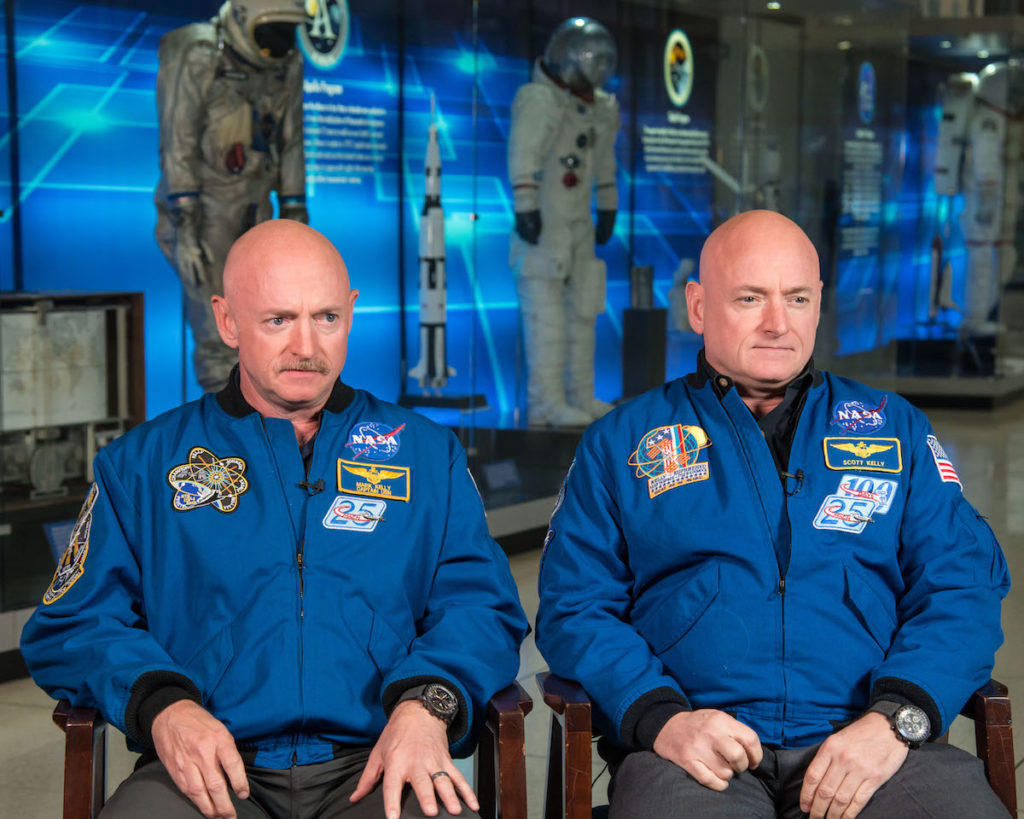
One thing that we don’t hear much about when talking about Kelly’s year-long mission is that a Russian cosmonaut, Mikhail Kornienko, was also stationed aboard the ISS for that full year. Living with another person inside a tiny series of modules is an accomplishment in itself.
